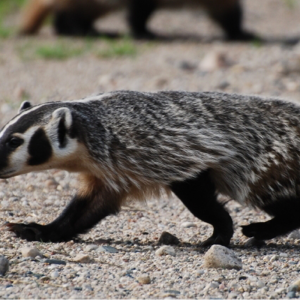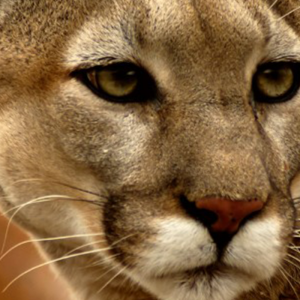Paruline du Canada
Vital Signs
Common name: Canada Warbler
Latin name: Cardellina canadensis
Status under SARA: Threatened, 2008 COSEWIC assessment: Threatened
Range: Found mainly in mixed deciduous-coniferous forests across Canada. Their breeding range is 85 percent in Canadian territory from the southernmost parts of Yukon and Northwest Territories to the Great Lakes region. The densest populations are in the eastern provinces of Ontario, Quebec and the Maritimes. Their migration ranges over mid-to-eastern United States and they overwinter in the Andean slopes of northern South America.
Life span: Relatively unknown; maximum recorded age was almost eight-years old.
Size: Small warblers. Wingspans of 20-22 cm; body length of 12-15 cm; weight between 9.5 g and 12.5 g, varies before and after migration.
Population estimate: There are approximately 2.7 million individuals today; however, since 1968, Canada Warblers have been declining at an annual rate of 4.5 percent.
The Facts
- Like most birds, Canada Warblers display sexual dimorphism where males are more brightly coloured than females and juveniles. However, in both sexes, you can see how they got the nickname Necklace Warbler – the “necklace” refers to the collar formed by the black stripes on their upper-chests. Canada Warblers also have bluish-grey tails and upper parts, contrasted by bright yellow throats and breasts. Males also have black feathers contouring their foreheads, cheeks and eyes. Unlike most birds, these warblers keep the same plumage all year!
- Canada Warblers are found in many types of forests, from conifer swamps to riparian woodlands. However, they are most commonly found in cool, damp, mixed deciduous-coniferous forests with well-developed shrub layers. Females choose areas ridden with dense ferns, mosses, fallen logs, or tree stumps to build their nests. Common nest materials include moss, leaf litter, and roots.
- In late May, Canada Warblers arrive in Canadian territory to begin their breeding season. Females lay four to five eggs and incubation lasts about two weeks. Chicks stay in the nest for 10 days after hatching, before venturing out on their own. Despite this burgeoning freedom, they remain dependent on their parents for another two to three weeks.
- This warbler is primarily an insectivore, feeding on flying insects such as mosquitoes, butterflies, and moths, as well as spiders. Whenever there is an outbreak of Spruce Budworms, you can be sure to find these warblers munching away!
- They forage until September and, once migration season begins, they embark on their journey to their winter homes in the Andes.
The Story
Eighty-five percent of the global breeding population of Canada Warbler occurs in Canada. For this reason, Canada has a major responsibility for the conservation of this species. However, this warbler also faces problems during its migration and in its wintering habitats in the South American Andes, so conservation efforts need to operate on an international scale.
The forests of the northern Andes – the main wintering grounds of the Canada Warbler – are among the most threatened in the world. Approximately 90 percent of these forests have been cleared for agriculture, fuel wood, cattle production, and the cultivation of plants such as coffee and coca (from which cocaine is derived). Deforestation and human development projects are of utmost concern. Furthermore, these issues impact all three habitat ranges of the Canada Warbler, so these little guys don’t even have a chance to recuperate their numbers.
In some parts of its breeding range, the high density of White-tailed Deer (Odocoileus virginianus), results in the overgrazing of the warbler’s preferred forest habitat, reducing the shrub layers they are dependent on.
Other factors believed to impact breeding grounds include certain forestry practices, forest fragmentation from roads and other infrastructure like the seismic lines in Northern Alberta, habitat desiccation from land draining in the south, and climate change – especially in the north.
The Canada Warbler is also susceptible to window collisions during migration. The problem is twofold – they don’t see clear windows during the day, and they are attracted to the light they let through at night. Mitigating these hazards could save many Canada Warblers.
What’s Being Done
The Canada Warbler International Conservation Initiative (CWICI) was established in 2013 at the BirdLife International Global Congress in Ottawa, with Nature Canada, Bird Studies Canada, Environment Canada, and BirdLife International leading. Nature Canada established the Canada Warbler International Conservation Initiative website as a public face for the initiative. Environment Canada published a Recovery Strategy for the Canada Warbler in 2015 to establish broad goals, strategies and timelines for recovery efforts for this threatened species. Over the past two years, Conservation Action Plans have been developed for both the wintering grounds in South America and southern Central America, and the breeding grounds in Canada and the USA. Current efforts are to weave these plans together into a full life-cycle Conservation Action Plan for the species. These effort will help direct the limited conservation resources where there are most needed. The consensus appears to be the wintering ground threats require the most immediate attention, and that shade grown, bird-friendly coffee could be a big part of the solution. Do you know where your coffee comes from? Purchase coffee that is shade-grown, fair-trade, organic, and ideally certified bird-friendly to support the Canada Warbler and many other species of birds and other wildlife.
Gaps in knowledge still need to be filled to inform effective conservation actions. Researchers are studying habitat preferences for this reclusive species, both on wintering and breeding grounds. Researchers are also connecting the dots between breeding grounds and wintering areas through the deployment of micro tracking devices such as geolocators. There is hope that such knowledge will elucidate why the most rapid decline of the species is in its eastern breeding range.
On the breeding grounds, we are working with the forestry sector, particularly with the Forest Producers Association of Canada (FPAC) and the Sustainable Forestry Initiative (SFI), advocating for practices beneficial to the Canada Warbler.
What You Can Do
There is always something you can do to help, even if it seems small!
Locally
- Purchase shade-grown, Fair Trade organic coffee from Colombia, Ecuador, Venezuela, Peru, or Central American countries such as Panama, Costa Rica or Nicaragua. You will be helping to preserve the habitat Canada Warblers use on migration and during their non-breeding season.
- Make windows visible to migrating birds. This can be done with solar blinds or taut netting during the day – options which won’t obstruct your view! At night, turn off building lights that attract birds, or close blinds and drapes so the light does not escape. Visit our Save Bird Lives webpages for more information on reducing window collisions.
- Support and work with groups like FLAP Canada, or Safe wings in Ottawa, if you want to address the window collision issue at the municipal level.
- Join our Keep Cats Safe and Save Bird Lives campaign by visiting our Cats and Birds website and signing up! Cats are estimated to kill between 100 and 350 million birds in Canada each year, and can impact the Canada Warbler, which passes through densely settled areas of Canada on its migrations.
- Join local naturalist or birding groups and participate in Citizen Science projects. See Bird Studies Canada for a full list of great bird-related projects!
Globally
You may not realize it, but much of our food comes from areas that have been deforested for crop production . Be eco-conscious when selecting products at the grocery store. For instance, purchase shade-grown coffee and organic chocolate products. Shade-grown crops are planted under forest canopies which respect the habitat requirements of wildlife, like the Canada Warbler.
Resources
Canada Warbler International Conservation Initiative—Nature Canada
Species at Risk Registry (SARA)
Canada Warbler—Ministry of Natural Resources and Forestry
Thank you to guest blogger Tina-Louise Rossit and Blair Scott for contributing this species spotlight.


